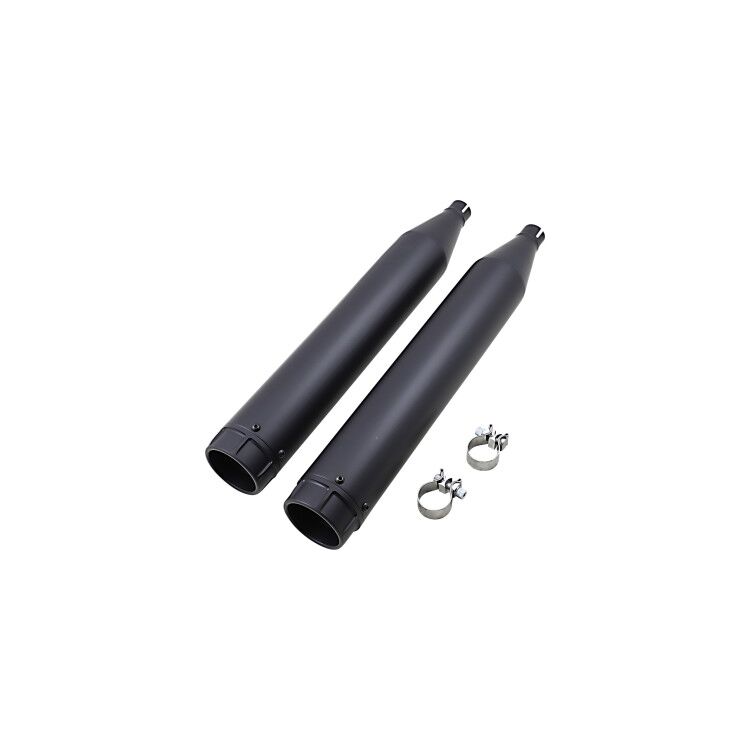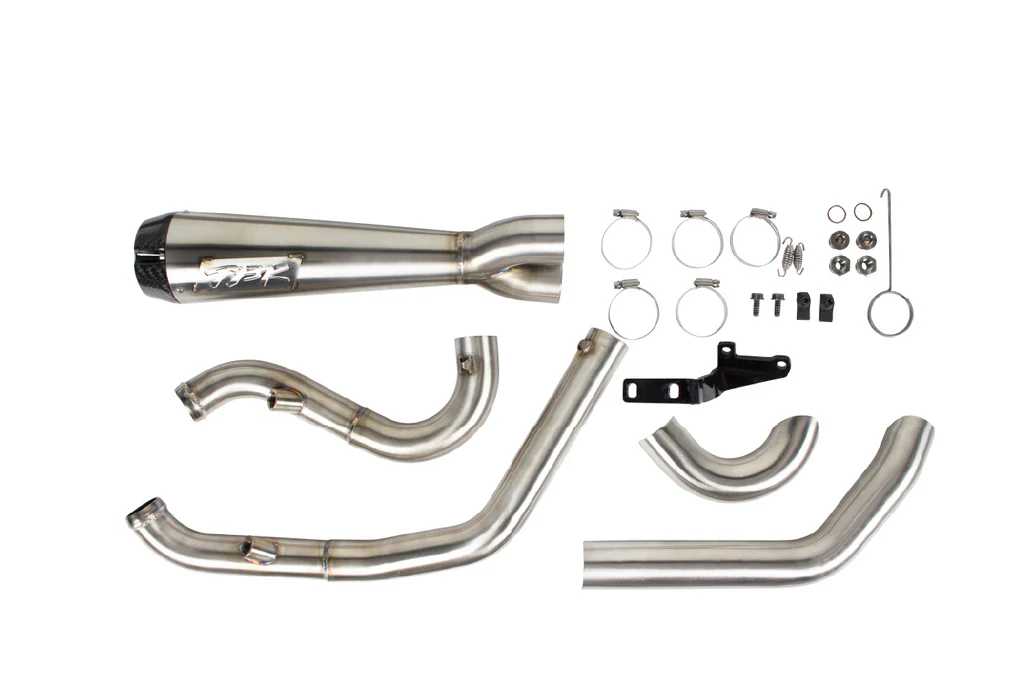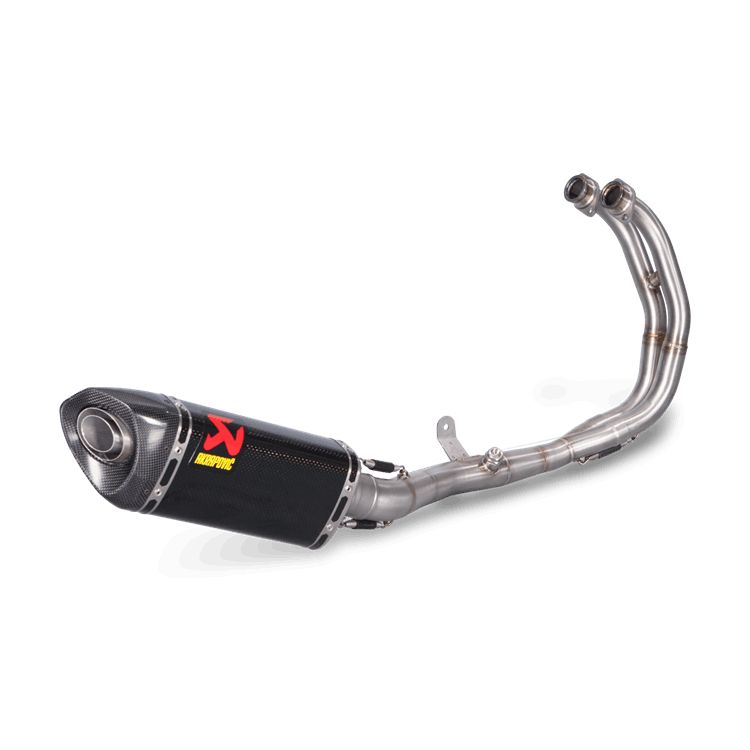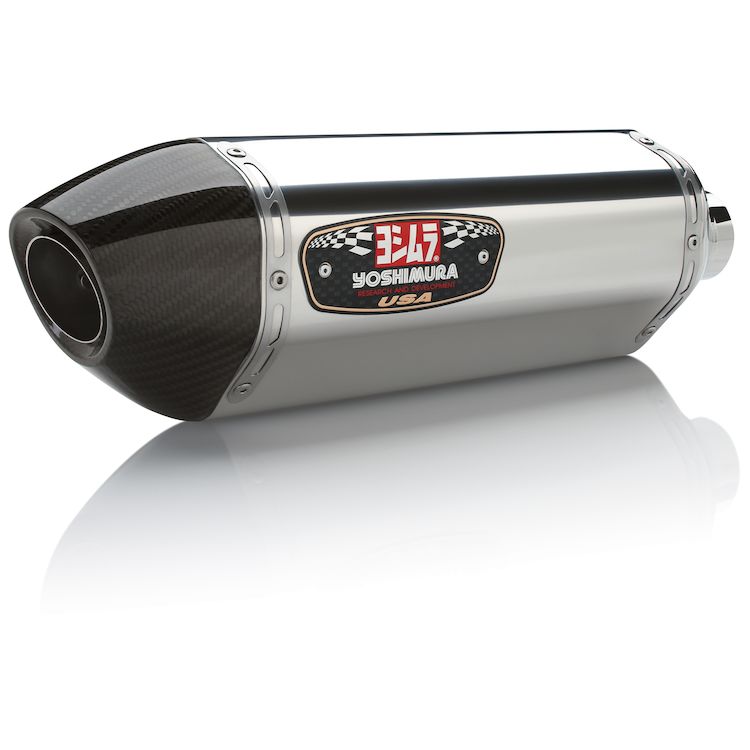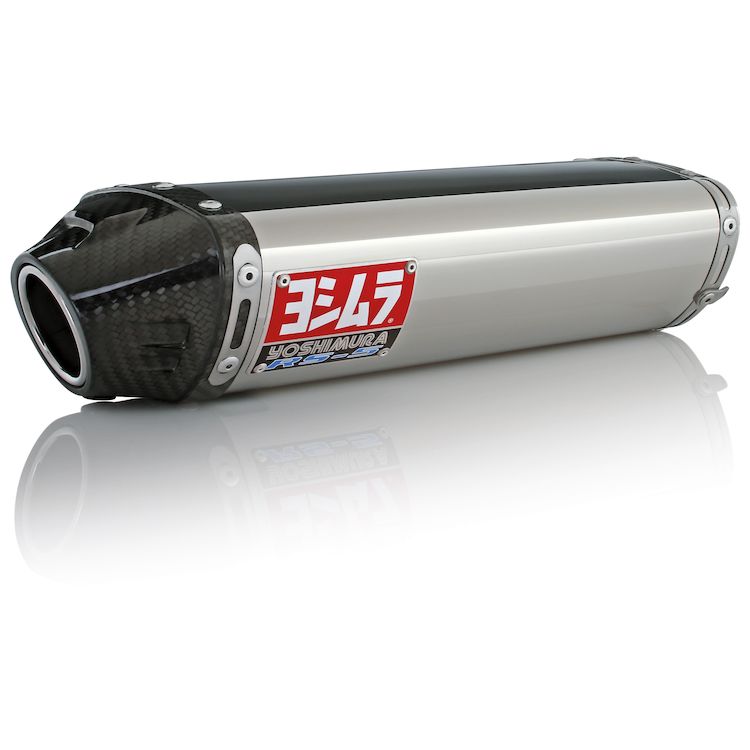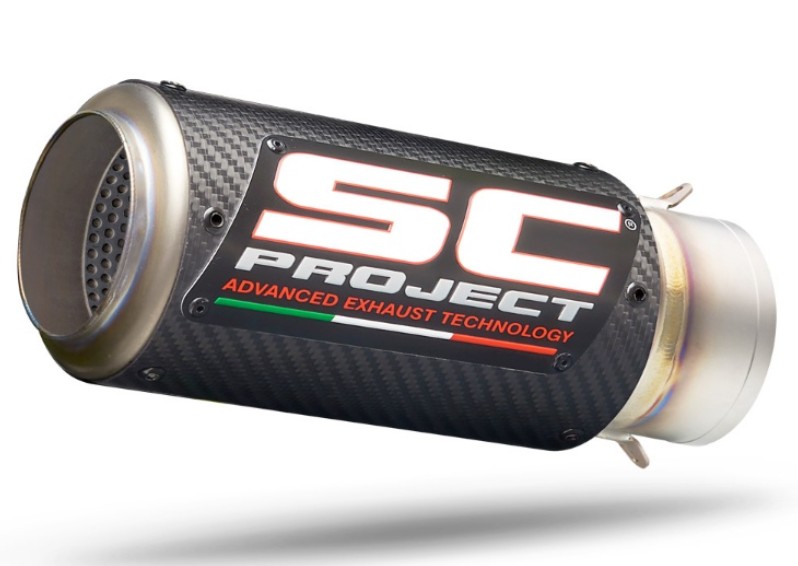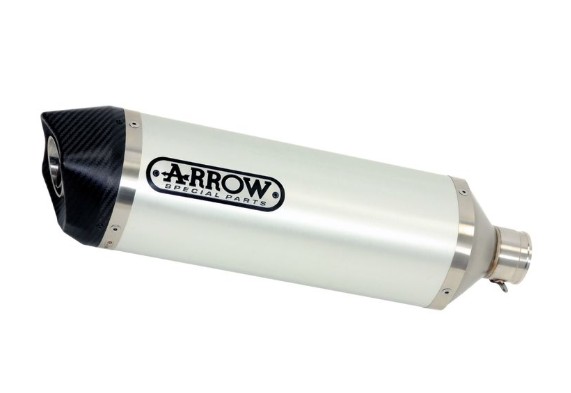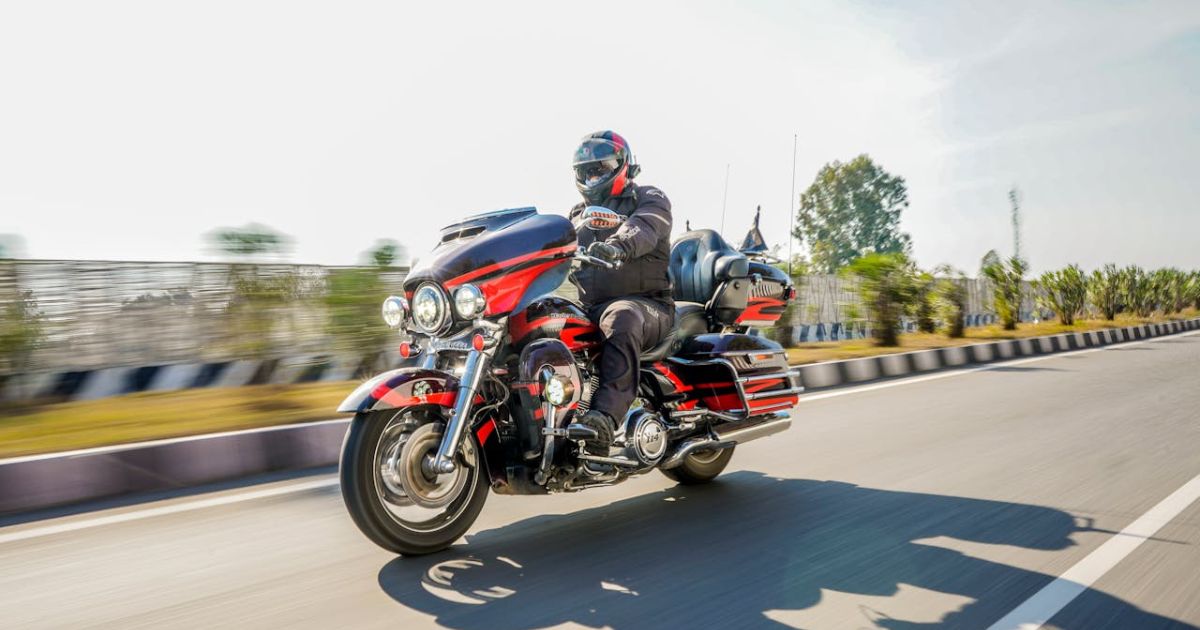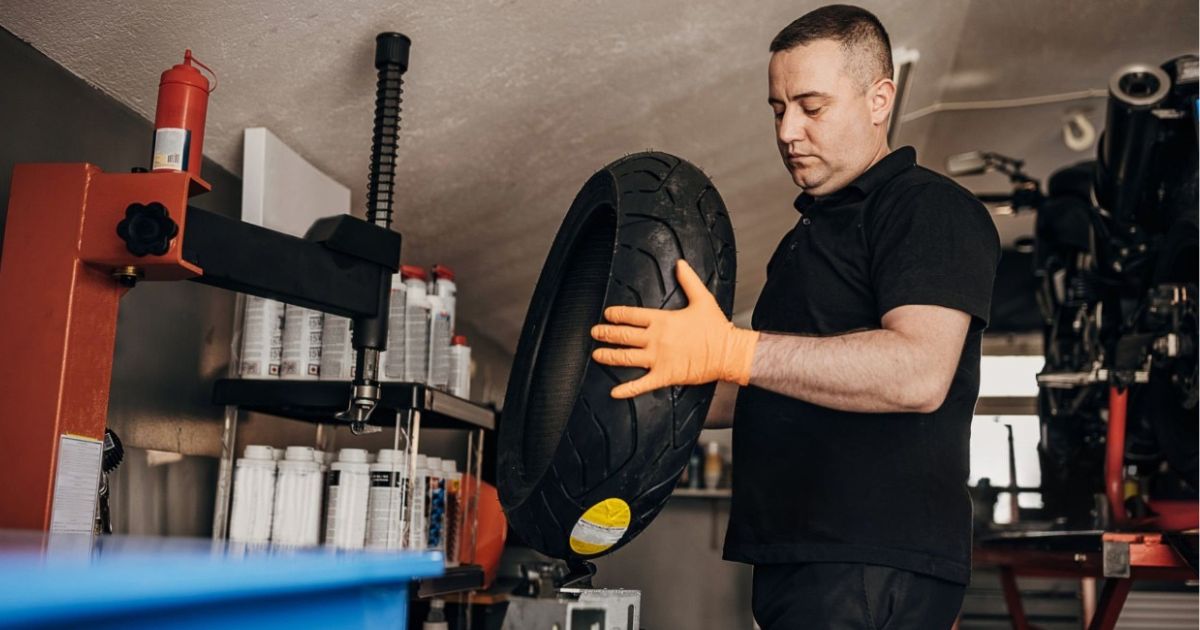
Best Motorcycle Exhaust Brands: Performance & Sound Guide
left for contents
Ripping the cork off your bike’s stock exhaust is one of the most satisfying mods a rider can make. The right pipe transforms how your motorcycle feels, sounds, and responds under throttle — the wrong one can rob power or get you ticketed.
In this guide, I break down the leading exhaust brands, explain who they’re for, and highlight the best systems available today. By the end, you’ll know how to get the rumble you want without sacrificing performance.
Bigger pipes don’t always mean more power, and louder isn’t always faster. Slip-ons can sometimes deliver more torque than full systems, and weight matters as much as horsepower. Most importantly, the exhaust that makes your buddy’s cruiser sing might make your sportbike run lean.
Let’s cut through the noise and find the perfect exhaust for your riding style.
Matching an Exhaust to Your Riding Style
Before shopping, think about how you ride. Touring bikes like Harley-Davidson Road Glides and Street Glides need low-end torque and a deep, bass-heavy tone. Sportbikes thrive on high-rpm power and weight savings, while naked and adventure bikes balance midrange punch with everyday usability.
Slip-on mufflers replace just the muffler section and are easy to install, offering a moderate boost in sound and a small increase in power. From touring torque to sportbike speed, the right exhaust balances sound, power, and style for your ride.
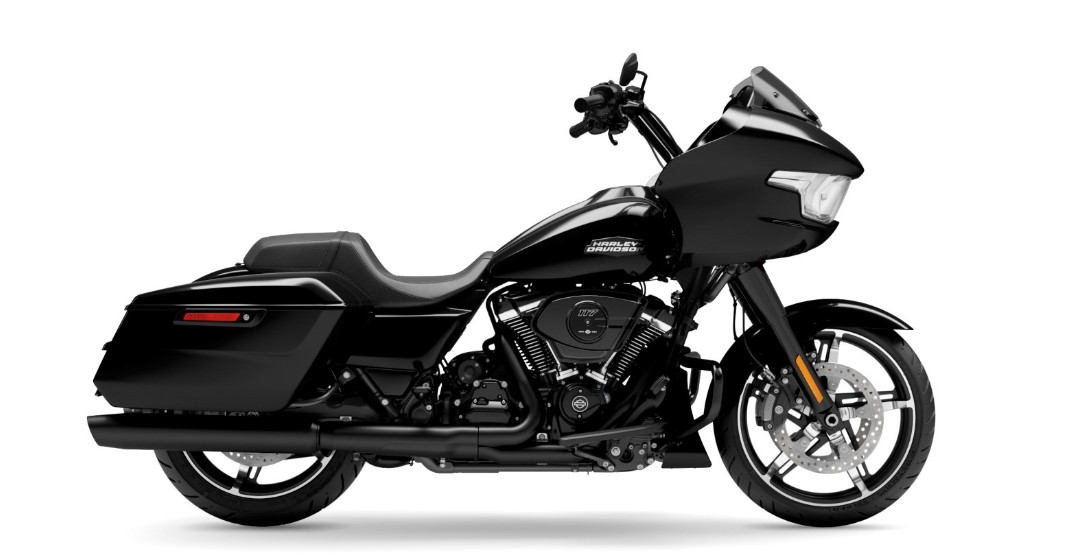
Full systems replace the entire exhaust from the cylinder head back, requiring a fuel tuner or ECU reflash for proper performance. They deliver bigger gains but come with higher cost and complexity. Two-into-one systems can improve torque on V-twins, while dual exhausts keep that classic look.
Materials matter: titanium and carbon fiber cut weight but cost more, while stainless steel and aluminum offer a durable, affordable balance.
The following brands and products represent the best blend of sound, performance, and build quality available for U.S. riders.
Vance & Hines Torquer 450 Slip‑On – For Milwaukee‑Eight Touring Bikes
Why this exhaust?
If you ride a Harley touring bike and want a deep, authoritative rumble without illegal noise, the Torquer 450 is the ticket. Vance & Hines designed this 4.5‑inch‑diameter slip‑on for Milwaukee‑Eight‑powered Road Glide, Street Glide and other touring models. Its LS‑275 baffles produce a bold, throaty tone, and the billet end caps add style. These slip‑ons are 50‑state emissions compliant and mount directly to the stock headers.
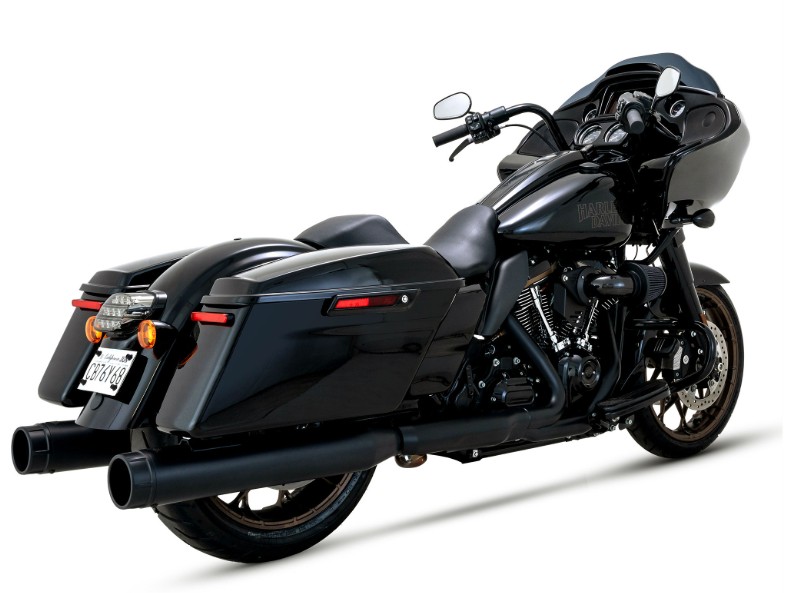
How it benefits your ride
The Torquer 450 improves horsepower and torque across the rev range. Riders report that throttle response sharpens and roll‑on acceleration feels more immediate. The large diameter muffler bodies let your V‑twin breathe easily yet still provide enough backpressure to avoid losing low‑end pull. The deep bass note is loud enough to satisfy without drowning out your tunes.
You can choose chrome or black finishes, and installation is straightforward—slip off the factory cans and bolt these on with the supplied hardware. At around $600 for chrome or $650 for black, they cost less than a full system but deliver an impressive sonic transformation.
These 4.5-inch Torquer 450 slip-ons deliver deep, bass-rich rumble at idle and a throaty growl under acceleration, while boosting performance with the free-flow LS-275 baffle and improving torque without sacrificing street usability.
- Rich rumble at idle, tames at cruise
- Improved torque and throttle response
- Deep tone without harsh rasp
- Street legal on most Touring models
- Milder sound with stock headers
- Large diameter adds bulk visually
Potential downsides and alternatives
A 4.5‑inch muffler adds visual bulk and a bit of weight. The flip side is the larger internal volume helps create that coveted bass note, and the mufflers’ heft can even improve stability at highway speeds. If you want a leaner look or a sportier tone, consider the Two Brothers Comp‑S 2‑into‑1 system below. It’s lighter and has a more aggressive crack but sacrifices some of the Torquer’s low‑rpm rumble.
Two Brothers Racing Comp‑S 2‑Into‑1 – For Sportster and Softail Riders
Why this exhaust?
Two Brothers Racing (TBR) made its name in racing, and their Comp‑S system brings that pedigree to Harley cruisers. The 2‑into‑1 design boosts midrange torque and gives Sportsters, Softails and other V‑twin machines a throaty bark. TBR uses stainless steel and aluminum or carbon fiber for strength and light weight, and the short, upswept muffler looks aggressive.
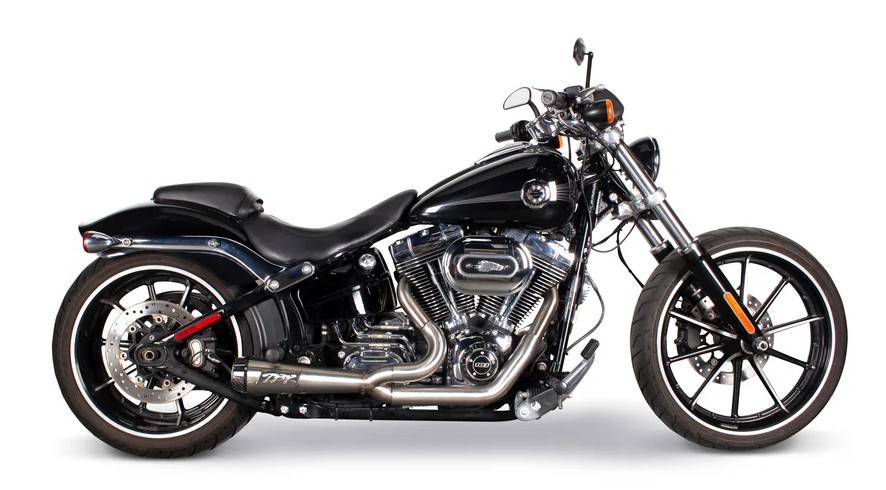
How it benefits your ride
By merging both cylinders into one collector, the Comp‑S improves scavenging and delivers a noticeable torque surge in the mid‑rpm range. That means stronger acceleration when passing or pulling away from a stop. The deep, raspy sound turns heads without being obnoxious. The system bolts up with minimal fuss, and TBR’s race‑bred build quality means it holds up to heat and vibration. If you’re accustomed to dual pipes, the single canister may save a few pounds and help you lean deeper in corners.
Race-bred 2-into-1 exhaust that boosts torque, sheds weight, and delivers aggressive sound for Sportster and Softail models.
- Improves ground clearance for Sportster & Softail
- Durable TIG-welded stainless steel construction
- Stronger torque in low-to-mid RPM range
- Lighter weight enhances handling feel
- Stainless finish can discolor with heat
- Louder tone may draw extra attention
Potential downsides and alternatives
A 2‑into‑1 changes the classic symmetrical look of a Harley. If you love twin mufflers and aren’t chasing every horsepower, the Vance & Hines Torquer 450 gives you a deep tone while keeping dual outlets. The Comp‑S’s raw sound might also overwhelm some passengers on long rides. For riders who want a mellower note, TBR’s M‑2 slip‑ons maintain dual pipes and still offer a performance bump.
Akrapovič Racing Line Slip‑On – For Sportbikes Seeking Weight Savings and Power
Why this exhaust?
Akrapovič is the gold standard for high‑performance exhausts. Their Slip‑On and Racing Line systems are built from ultra‑light titanium and carbon fiber and offer noticeable gains in power and torque. The Racing Line slip‑on used on Yamaha’s R1 can save up to 10 lbs and boost horsepower by roughly 6%. Akrapovič’s signature muffler shape and carbon end cap look as good as they perform.
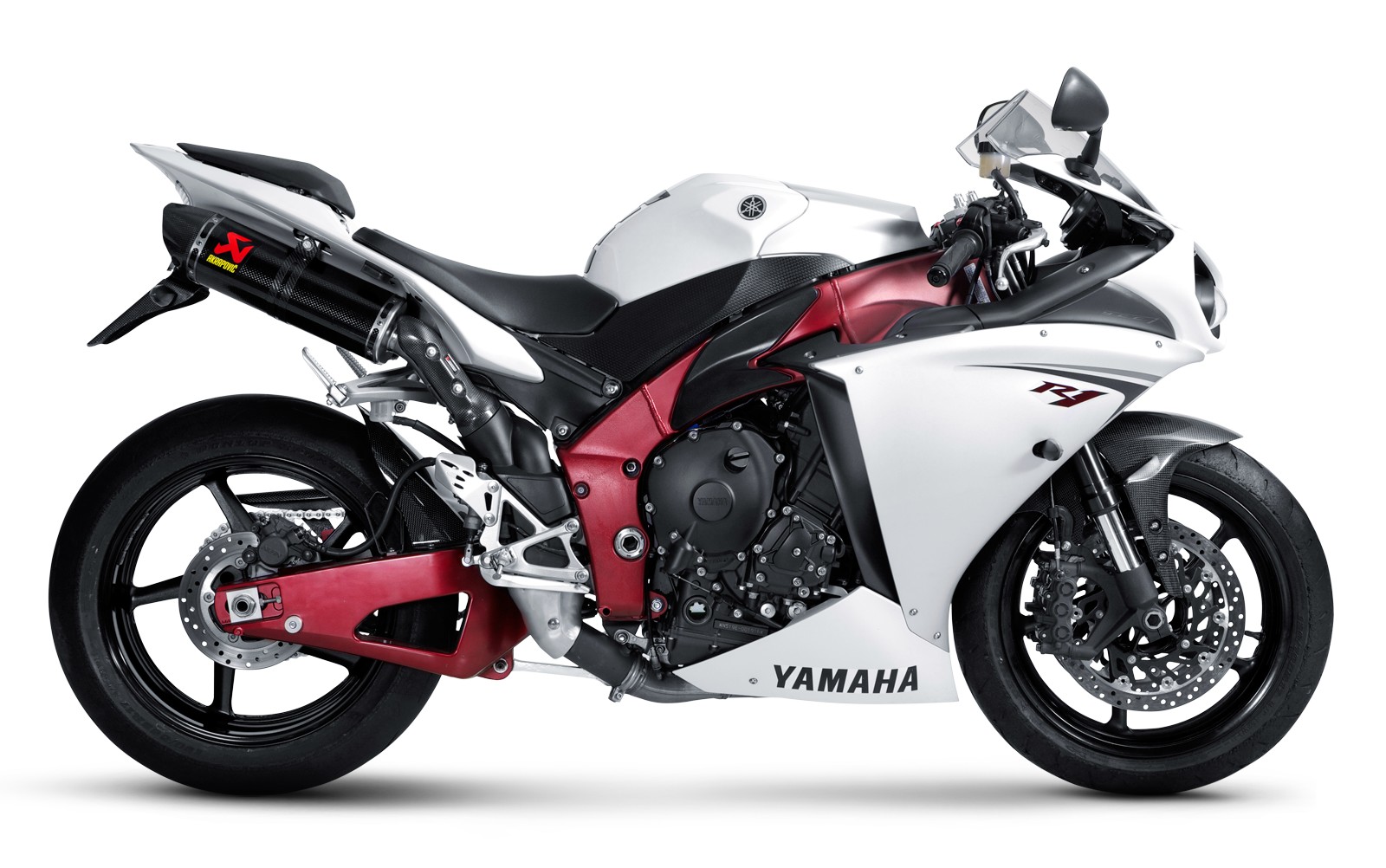
How it benefits your ride
Dropping weight on a sportbike improves handling as much as straight‑line speed. Shedding 10 lbs of high‑mounted mass makes turn‑in sharper and reduces fatigue over long rides. The Racing Line slip‑on deepens the exhaust note without waking your neighbors, giving a rich tone that grows more aggressive as revs climb. Riders rave about smoother throttle response and a more urgent pull through the midrange. Akrapovič’s plug‑and‑play fit means you don’t need to cut or weld anything, and quality titanium resists corrosion better than steel.
Akrapovič systems deliver premium sound with sharp tone, reduce weight noticeably and improve throttle response, all while offering top-tier craftsmanship.
- Excellent build quality using premium materials like titanium/stainless
- Strong weight savings enhance handling and responsiveness
- Aggressive exhaust note that ramps up cleanly with revs
- Performance gains especially in mid-to-high RPMs for many bikes
- May be too loud for street or residential settings
- Cost and parts/tuning requirement can make full gains expensive
Potential downsides and alternatives
Akrapovič’s craftsmanship comes at a price. These slip‑ons are among the most expensive in this roundup. However, the weight savings and power gains are tangible. If cost is a concern, Arrow’s Race‑Tech slip‑on (see below) offers a more budget‑friendly option with solid performance. Also, while the Racing Line slip‑on often works without a tune, adding a fuel controller or ECU flash will unlock its full potential.
Yoshimura R‑77 and RS‑5 Slip‑Ons – For Riders Who Love a Signature Growl
Why this exhaust?
Yoshimura has been tuning Japanese bikes since the 1950s. Their slip‑ons blend performance and refinement. The R‑77 and RS‑5 series use stainless steel and carbon fiber constructions to reduce weight and add a distinctive, burly growl. On a liter‑class bike, the RS‑5 Slip‑On smooths midrange torque and improves throttle response while reducing engine heat.
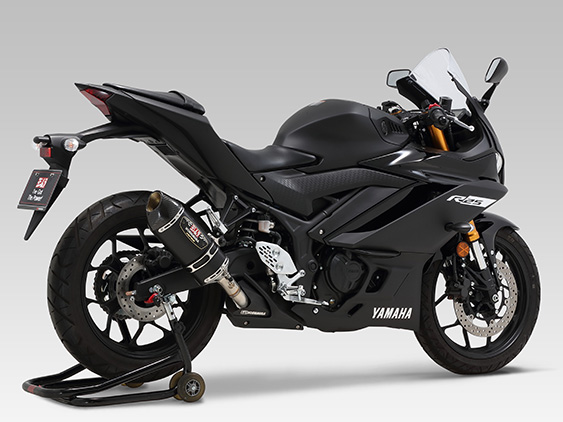
How it benefits your ride
Yoshimura slip‑ons deliver a smoother, more linear power curve. Riders report improved throttle modulation mid‑corner and faster roll‑on acceleration. The trapezoidal muffler shape gives a unique look, and the Works Finish (a light satin treatment) ages gracefully.
Unlike some loud pipes, the R‑77 doesn’t drone on the highway; instead it produces a muscular note that grows into a snarling howl at high rpm. On dual‑sport and adventure bikes, Yoshimura’s RS‑12 series can even improve clearance and help with pannier fit.
The R-77 delivers a bold, throaty tone and sheds several pounds versus stock, improving throttle response and offering sharper mid-to-high RPM performance. | The RS-5 adds sharp style and lighter weight, delivering racier tone with removable low-volume insert, improving throttle response and enhancing mid-to-high RPM pull. |
|
|
|
|
The R-77 delivers a bold, throaty tone and sheds several pounds versus stock, improving throttle response and offering sharper mid-to-high RPM performance.
- Noticeable weight reduction enhances handling feel on turns
- Full, aggressive exhaust note that commands attention
- Stronger mid/high RPM power pull for spirited riding
- High-quality fit and finish with good materials and welds
- Requires careful install; tight fitment on some header pipes
- Loudness may be excessive for quiet street or residential use
The RS-5 adds sharp style and lighter weight, delivering racier tone with removable low-volume insert, improving throttle response and enhancing mid-to-high RPM pull.
- Aggressive race-inspired design with carbon end-cap
- Removable insert lets you adjust sound level
- Lighter weight improves handling and agility
- Refined tone, louder than stock but not harsh
- May exceed street noise limits in some areas
- Finish can discolor without proper care
Potential downsides and alternatives
Yoshimura systems often run hotter on the surface than titanium options. The upside is durability; stainless steel handles road salt and debris better. If heat on your leg is a concern, the carbon fiber sleeve stays cooler. Riders seeking an even lighter system should look at SC‑Project or Akrapovič. For those who value a smoother tone over sheer volume, the Yoshimura slip‑on hits the sweet spot.
SC‑Project CR‑T Slip‑On – For MotoGP Sound on the Street
Why this exhaust?
SC‑Project is an Italian company that builds exhausts used in MotoGP and Moto2. Their CR‑T slip‑on brings that racing DNA to your street bike with ultra‑light titanium and carbon fiber construction. The muffler is a short, conical “shorty” that emits a raw, Moto2‑like tone, and it comes with a removable dB killer to adjust noise levels.
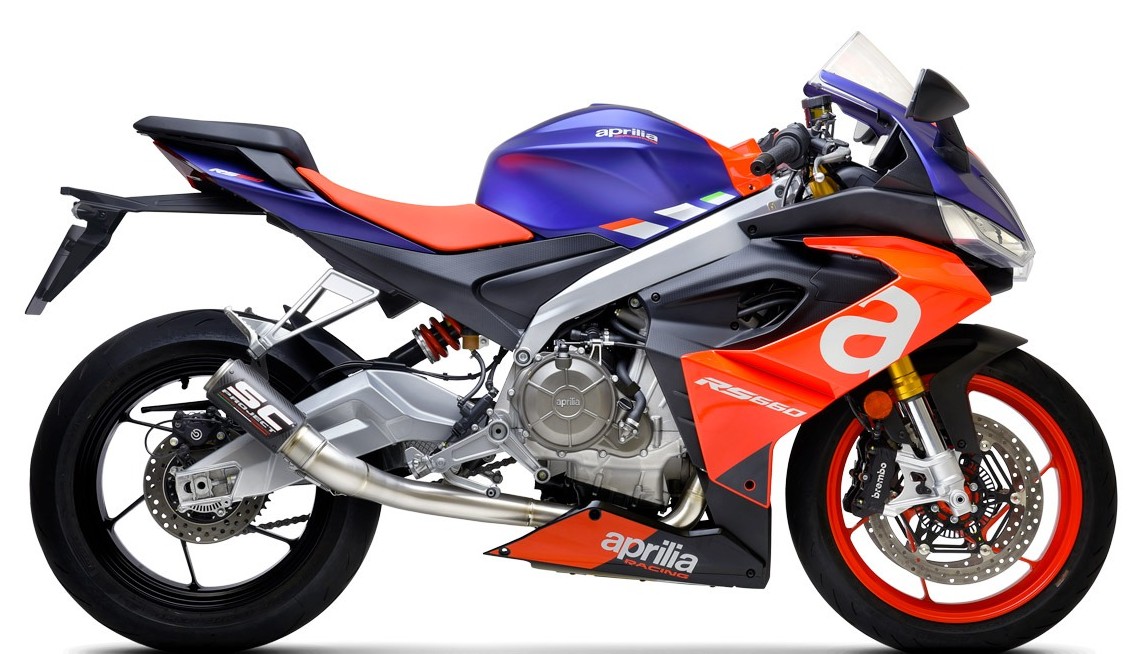
How it benefits your ride
The CR‑T is all about reducing weight and freeing up power. Some applications shed over 70% of the weight compared to stock exhausts according to SC‑Project’s marketing. That weight reduction makes the bike more flickable and helps the suspension work better over bumps. Riders praise the instant throttle response and the spine‑tingling bark on overrun. The titanium’s blueing adds character as it heats and cools. Unlike some race‑only systems, the CR‑T often includes a catalytic converter or optional dB killer so you can ride without attracting unwanted attention.
SC-Project slip-ons deliver aggressive sound, weight savings, and sharp styling, enhancing throttle response and improving aesthetics significantly on many sport & naked bikes.
- Noticeable reduction in weight improves handling feel
- Striking Italian craftsmanship & premium materials
- Deeper, fuller tone that stands out on deceleration
- Good bolt-on fit; installs cleanly in many OEM setups
- Quite loud—may be too much for quiet street or neighborhoods
- Performance gains often modest unless paired with tuning or full system
Potential downsides and alternatives
Its short canister means the CR‑T is loud even with the dB killer installed. If you commute early or live in a tightly regulated area, this may not be the best choice. SC‑Project also offers the SC1‑R, which has a longer body and slightly tamer tone. Alternatively, Yoshimura’s R‑77 offers a refined growl that’s easier on the ears. Another drawback is price; you pay for MotoGP pedigree. But the combination of weight savings and raw sound is hard to beat if you crave a race‑bike feel.
Arrow Race‑Tech Slip‑On – For Value‑Minded Performance Seekers
Why this exhaust?
Arrow has been around since 1985 and is known for balancing performance with competitive pricing. The Race‑Tech slip‑on features stainless steel internals and an aluminum or carbon fiber canister. It’s praised for offering strong midrange power gains and a sleek, understated design. Riders of bikes like the BMW S1000RR, Aprilia RSV4, or Honda Africa Twin often choose Arrow to wake up their machine without spending a fortune.
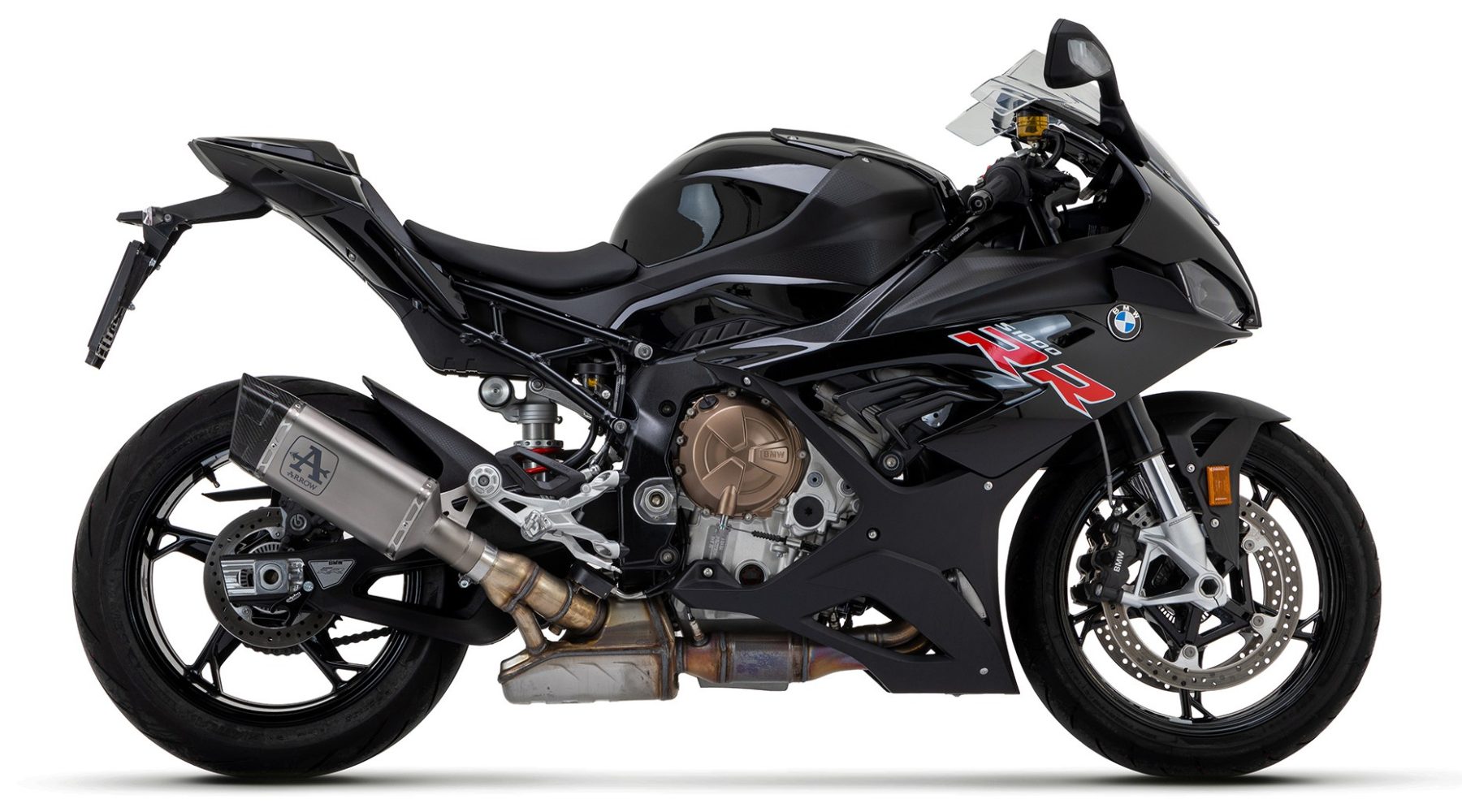
How it benefits your ride
Arrow’s Race‑Tech improves throttle response and adds a satisfying exhaust note without being obnoxious. The removable baffle lets you tailor the sound. Compared with stock cans, this slip‑on reduces weight slightly and frees up a few horsepower. The diamond‑shaped muffler compliments modern naked bikes and doesn’t stick out beyond the rear wheel, so it won’t melt your soft luggage. Installation is straightforward with basic hand tools.
Arrow Race-Tech slip-ons offer a sharp, aggressive sound, reduce weight significantly, and have a compact diamond-shape design to improve fit & aesthetics.
- Reduced weight improves handling and agility
- Compact diamond shape fits tight spaces well
- Distinctive exhaust tone under throttle
- High build quality with durable materials
- Louder than stock, not ideal for quiet areas
- Compact shape can limit heat dissipation
Potential downsides and alternatives
Arrow’s finish quality isn’t quite at the level of Akrapovič or SC‑Project, and the weight savings are modest. However, the value proposition is excellent: you get measurable performance gains and a crisp tone for less money than other premium brands. If you ride a bigger liter‑bike and want the absolute lightest system, Akrapovič’s titanium slip‑on or SC‑Project’s CR‑T might be worth the extra cost. For small‑ to mid‑displacement bikes, the Arrow is hard to beat.
Comparison Table
| Brand & Model | Best For | Materials & Weight Savings | Key Benefit |
|---|---|---|---|
| Vance & Hines Torquer 450 Slip‑On | Harley touring (Road Glide, Street Glide) | Stainless steel construction; large 4.5‑inch diameter mufflers; moderate weight | Deep, throaty sound and improved torque while staying 50‑state legal |
| Two Brothers Racing Comp‑S 2‑into‑1 | Sportster and Softail cruisers | Stainless steel and aluminum or carbon fiber; one‑can design saves weight | Midrange torque boost and aggressive rumble with a race‑inspired look |
| Akrapovič Racing Line Slip‑On | High‑performance sportbikes | Titanium and carbon fiber; up to 10 lb weight reduction | Significant horsepower gain (≈6% on R1), improved throttle response and premium finish |
| Yoshimura R‑77 / RS‑5 Slip‑Ons | Street and sport riders seeking a balanced tone | Stainless steel and carbon fiber; moderate weight reduction | Smooth midrange torque and a signature growl; reduces engine heat |
| SC‑Project CR‑T Slip‑On | Riders chasing MotoGP sound and minimal weight | Ultra‑light titanium and carbon fiber; dramatic weight savings | Raw race‑bike tone with removable dB killer; extreme weight reduction |
| Arrow Race‑Tech Slip‑On | Value‑minded riders on naked bikes and smaller sportbikes | Stainless internals with aluminum or carbon cans; slight weight drop | Affordable price with noticeable midrange power boost and sleek design |
Buying Guide: Choosing the Right Exhaust
Understand Your Goals
Do you want a deeper growl, more horsepower or just a lighter bike? Slip‑on mufflers are ideal if you’re after better sound and a modest performance bump without major modifications. They replace only the muffler section and can usually be installed in your garage. Full systems replace the entire exhaust and can unlock significant power gains, especially when combined with an ECU tune, but they cost more and often require intake and fueling adjustments.
Consider Your Bike Type
Harley and Indian touring riders typically prefer two‑into‑one systems for torque. Sportbike riders benefit from lightweight titanium systems that improve high‑rpm power. Naked bike and dual‑sport owners might prioritize a balance of midrange punch and durability.
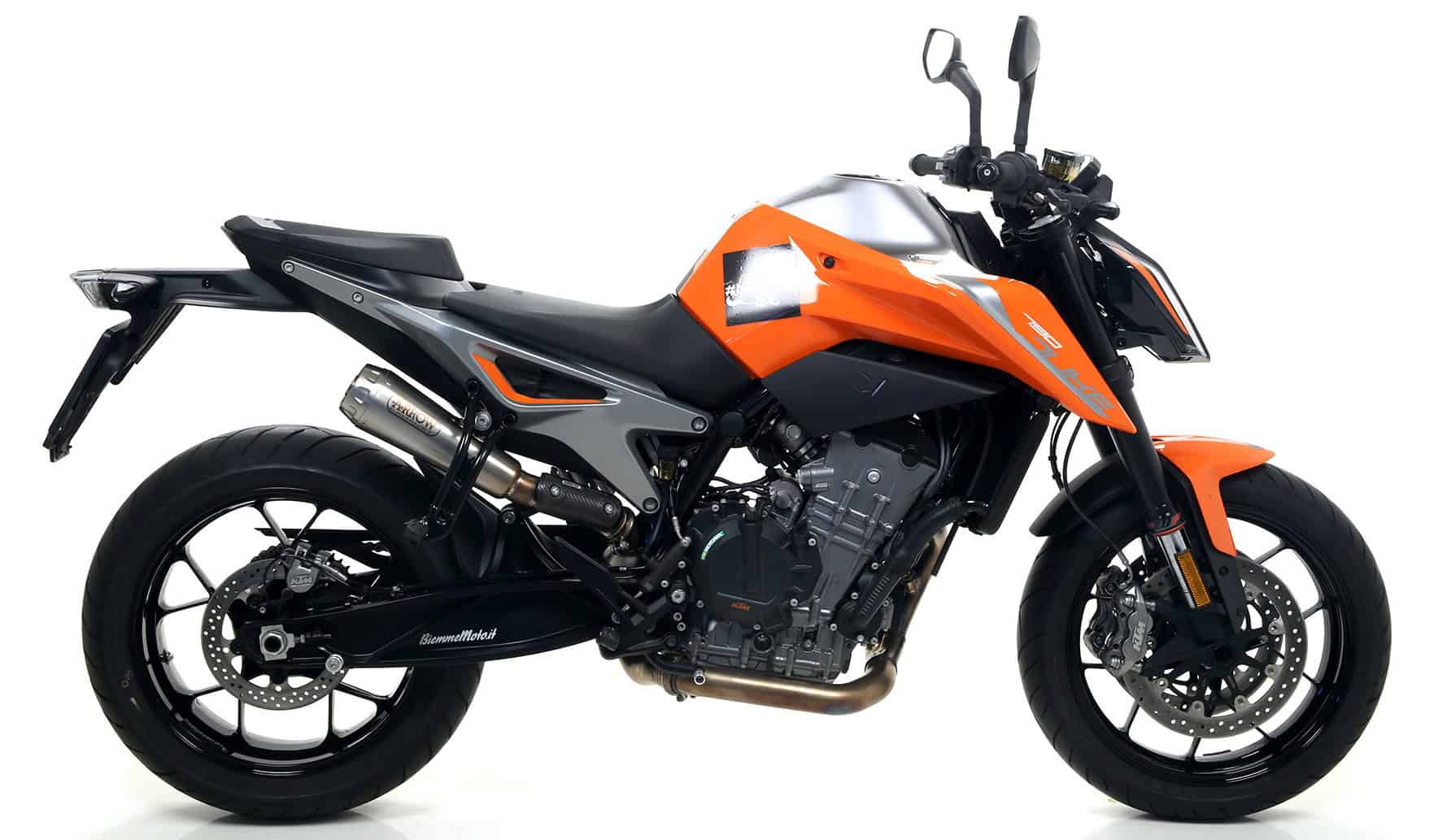
Materials Matter
Titanium and carbon fiber save weight but carry a premium. Stainless steel offers durability and decent weight savings at a lower price. Aluminum is light but less durable over time. Chromed steel looks gorgeous and lasts for decades but is heavier. Carbon fiber mufflers also stay cooler on the outside, which is a bonus for passengers.
Sound and Legality
Every state has noise regulations. Some systems come with removable dB killers or catalytic converters to keep sound in check. Vance & Hines’ Torquer 450 is 50‑state emissions‑compliant. SC‑Project offer both racing and homologated versions. Before purchasing, verify that your chosen exhaust is legal in your area, especially if you live in California.
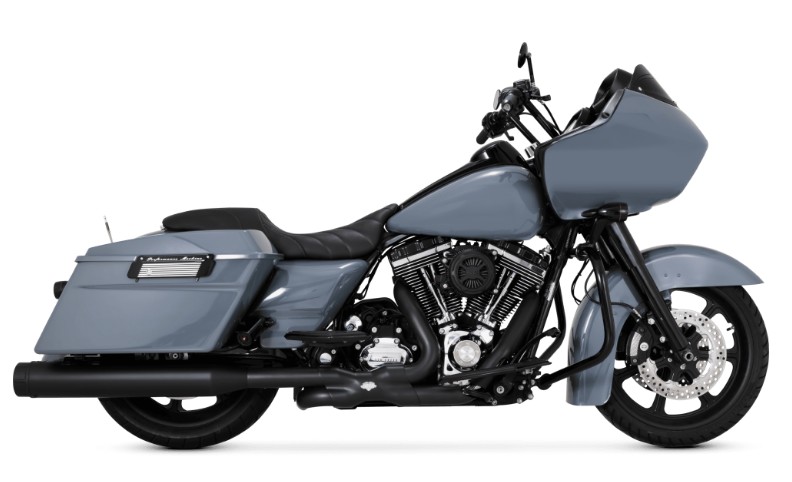
Performance vs. Look
A massive pipe looks cool but can reduce low‑end torque if the internal volume is too big. Likewise, short, open megaphones sound glorious but often require fuel tuning to avoid running lean. Two‑into‑one systems can improve torque on V‑twin engines. Dual pipes maintain a balanced appearance and can allow for saddlebag clearance, but they add weight.
Installation and Maintenance
Slip‑ons typically take less than an hour to install with basic tools. Full systems may require removing fairings, heat shields and oxygen sensors. Some kits include all gaskets and clamps; others require you to reuse OEM hardware. Once installed, check fasteners regularly because heat cycles can loosen them. Clean titanium and carbon fiber with non‑abrasive products to maintain their appearance.
Budget
Plan your budget not just for the exhaust but also for any required tuning (fuel controllers or ECU flashes), intake upgrades and labor if you’re not wrenching yourself. Arrow and Two Brothers offer excellent value. Akrapovič and SC‑Project command a premium for performance and materials.
Future Upgrades
Think ahead. A slip‑on may be the first step in a staged performance plan. Some systems like Akrapovič’s Slip‑On can be paired with optional titanium headers to build a full system later. Others, such as Vance & Hines’ Torquer 450, are designed specifically for stock headers and may limit future modifications. Choosing a system that can grow with your build might save money down the road.
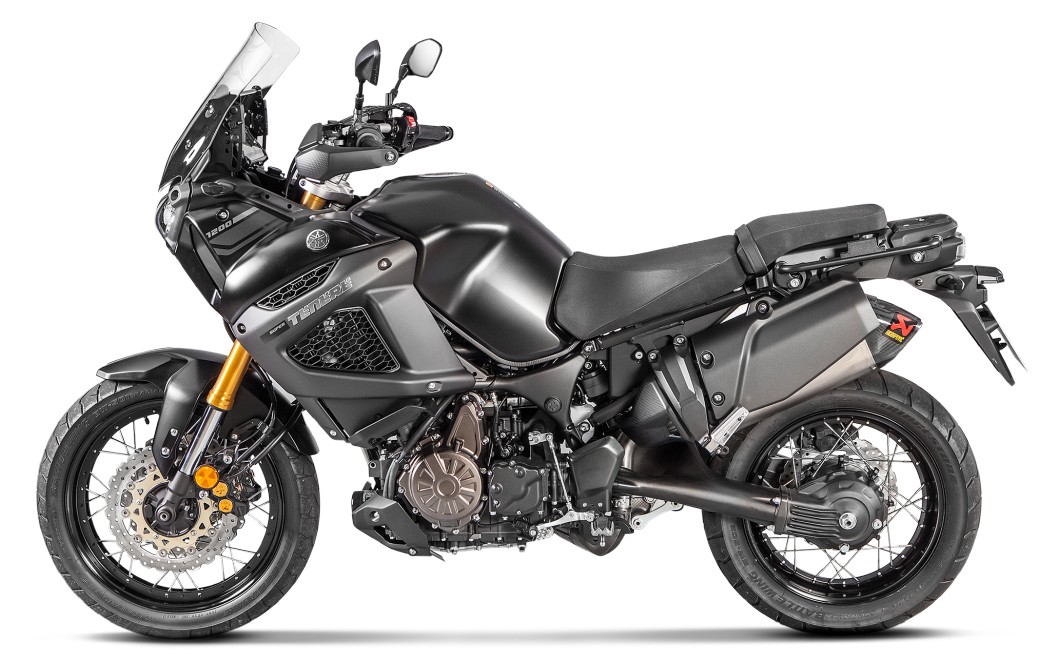
Final Thoughts
Your motorcycle’s exhaust is its voice, and choosing the right one is deeply personal. Whether you crave the deep bass of Vance & Hines, the race‑inspired bark of SC‑Project, the balanced growl of Yoshimura or the feather‑light scream of Akrapovič, there’s a system that suits your bike and your style.
Focus on how you ride, what you want to feel and hear, and how much you’re willing to invest. The brands covered here represent the best in the industry, each with unique strengths. Whichever you choose, make sure to set it up properly and enjoy the way a great exhaust turns every ride into an adventure.
Related
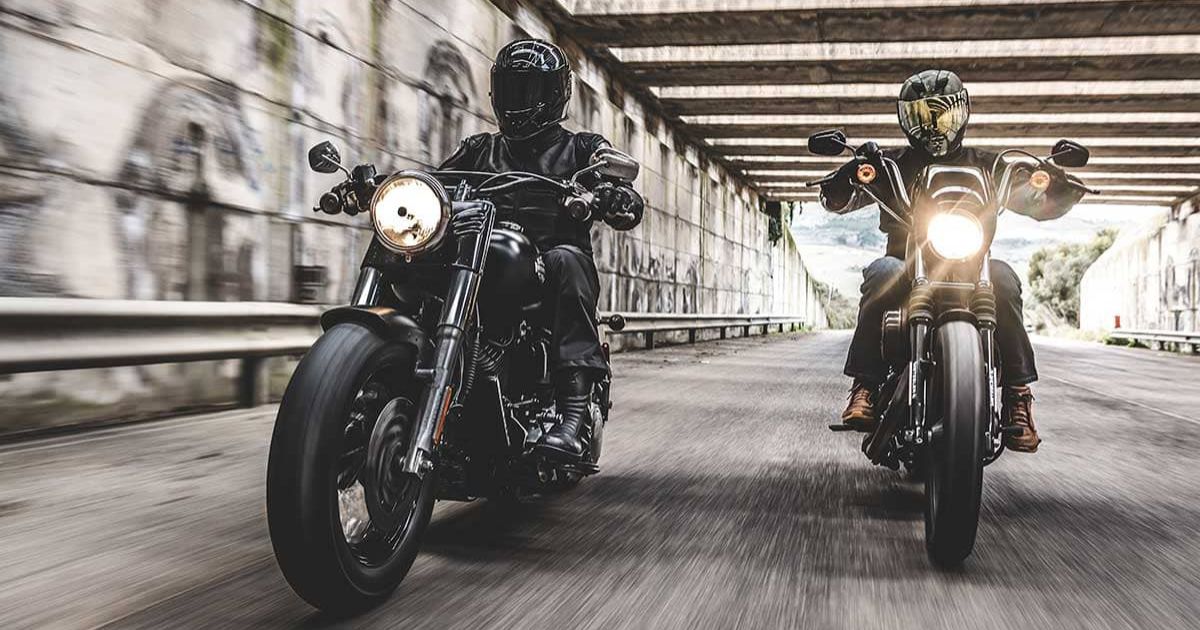
Best Cruiser Tires for Motorcycle Riders in 2025
Discover the best cruiser tires of 2025 for riders—tested for grip, comfort, mileage, and style to keep your V-Twin planted and confident.

